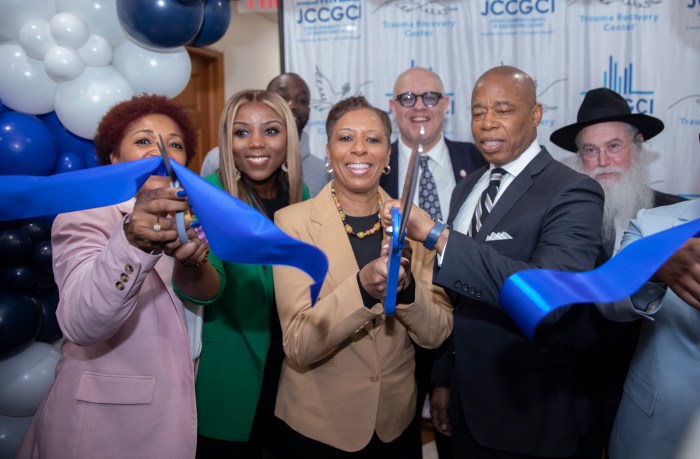Harlem, a neighborhood synonymous with arts, culture and literature has given birth to some of the most famous names in history—including an era of fashion, theater, politics, and music through the Harlem Renaissance. Yet through it all there has been one constant driving force servicing this Upper Manhattan community: the Greater Harlem Chamber of Commerce (GHCC).
The GHCC might be best known for their work hosting Harlem Week — a festival that’s key focus is to inform and educate individuals on the history of this diverse community with African-American diaspora, LatinX roots, European culture and more. But the chamber does far more throughout the year, as it has over the last century and a quarter.
The year 2022 marked the 125th anniversary since GHCC’s inception, serving as the foundation for community stability as well as nourishing the Harlem area with prosperity and growth. Surviving through two pandemics — the influenza epidemic in 1918 and COVID-19 in 2020 — the GHCC has continued to work steadfast in strengthening what they are stating as Harlem’s Second Renaissance through small business revitalization, better housing, education and more.
In order to better understand the deep-rooted socio-economic impact GHCC has had, Lloyd Williams, the president and CEO of GHCC, explained to amNewYork Metro some of the key initiatives that have been in effect over the past year while also looking at the months to come in 2023.
Williams feels that Harlem’s resurgence began with the return of tourism, which helped boost economic employment, cultural and educational growth, as well as initiatives surrounding climate change, education, jobs, careers, and public service.
Some of that public service came during the city’s darkest days: the global coronavirus pandemic. In 2020, the Community Relief Fund — originally intended to offer food to 500 residents five days a week from April to June — transformed into a large-scale distribution to help aid thousands of families who lined up daily for meals thanks to the GHCC.
Together with the Salem United Methodist Church and the Salvation Army, the fund was able to expand their distribution to six days as well as home delivery service of pantry food items to immobile senior citizens.
COVID-19 likewise shone a blinding light on the technological divide within the educational system when students were forced to work remotely, leaving those without access to laptops, smartphones, and more at a disadvantage. Seeing this need, GHCC has endeavored to promote S.T.E.A.M. based curriculum as well as developing technology leadership and literacy.
The Chamber has worked to make Harlem the oasis of the tri-state area, attracting new businesses, entrepreneurial projects, and “state of the art” industries developing in the community, as well as encouraging diverse retail, commercial, educational and residential developments.
“Over the past year, the COVID-19 pandemic and the overlapping cultural reckoning over racial injustice have shed light on the stark socioeconomic and public health disparities experienced by people of color domestically and worldwide. Today, those same needed conversations are happening around how we approach another global crisis and its associated public health ramifications — climate change,” Williams said.

Last year, GHCC made its mission to bring awareness to the impact climate change has had on communities of color. In order to combat this, GHCC partnered with numerous educational facilities, elected officials and others to host discussions on this disproportionate impact, what the government is doing to address the root cause, and how to partner with local businesses and academic organizations to promote change in policy. Additionally, GHCC participated with City Parks clean up and planting initiatives, a Summit during Harlem Week Festival, and more.
Over 2022, GHCC has also helped with four major development projects that are still underway on Harlem’s “Main Street,” 125th Street, which includes a new headquarters for the National Urban League, the redevelopment of the Victoria Theater, Studio Museum in Harlem, and the major capital redevelopment of National Black Theatre.
“The Chamber has made it very clear to the business and political community the important role Arts and Culture plays as an education and economic engine. Harlem has and continues to be a mecca for creativity and inspires innovation. The Chamber actively and consistently advances, promotes, encourages this innovation which is represented through our various events, activities, and efforts including Harlem Week and Harlem Music Festival featuring the best in fashion, entertainment, and culture,” Williams said.
In December the work of Williams and GHCC over the many decades was recognized and honored by the NYC and Company Foundation at their 20th annual Visionaries and Voices Gala. The GHCC was applauded at The Plaza Hotel for resources and opportunities that help ensure that Harlem continues to serve as the historical and cultural capital of Black America. Harlem has grown from strength to strength as its primarily Black and Brown population carved out a community that has become known and desired worldwide for its culture, landscape, and people, and through all of that GHCC has been its backbone that has and will continue to see it grow.


















